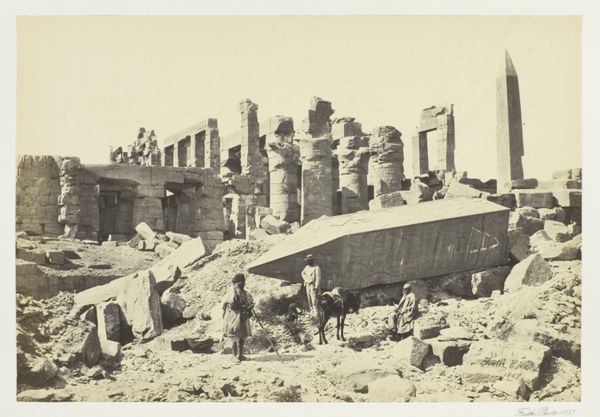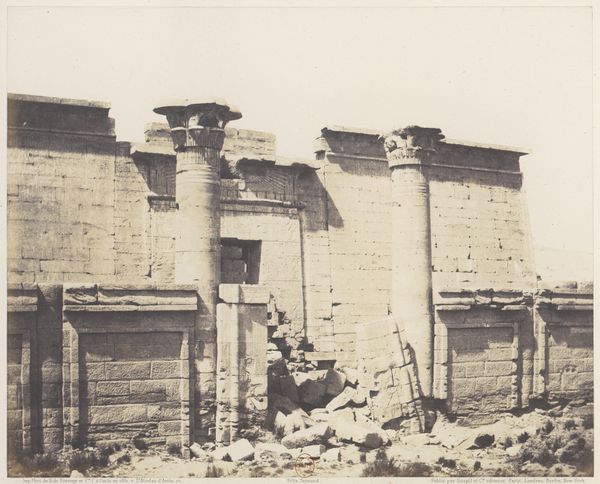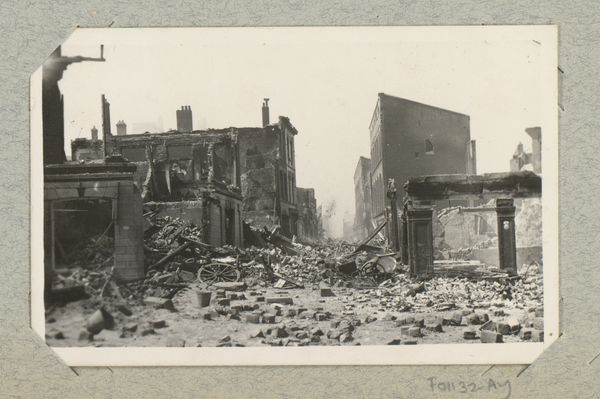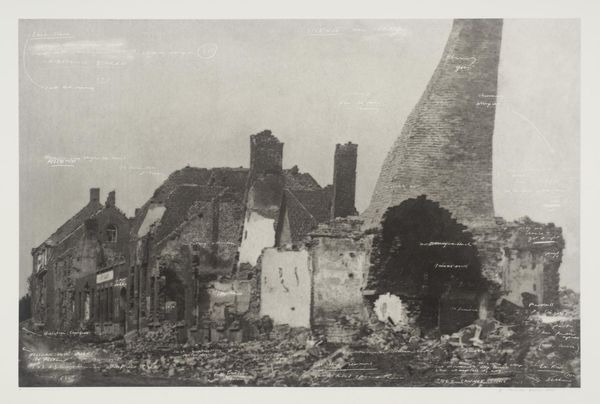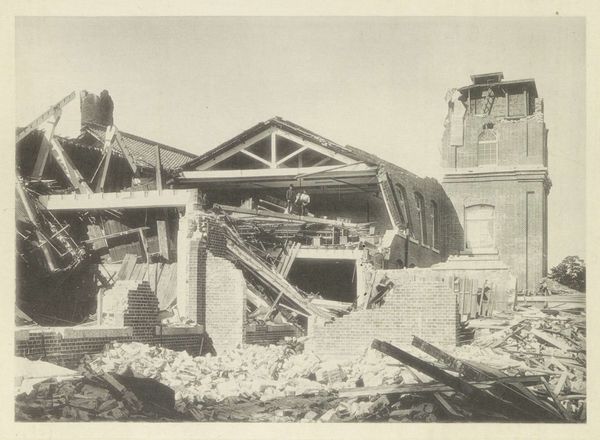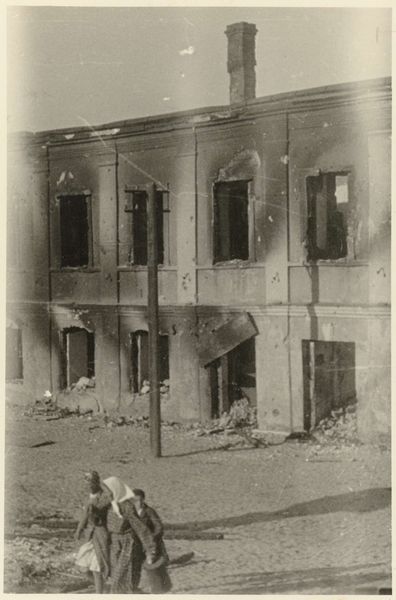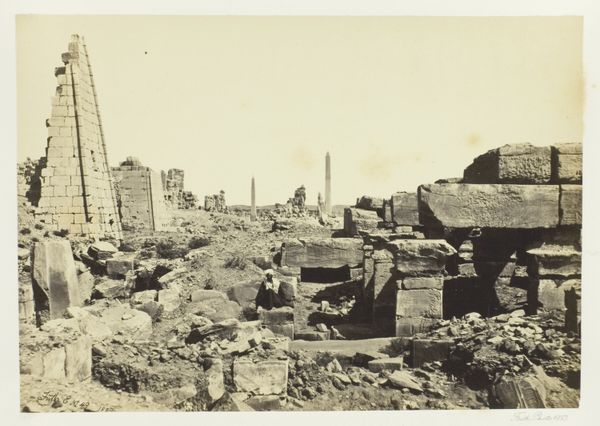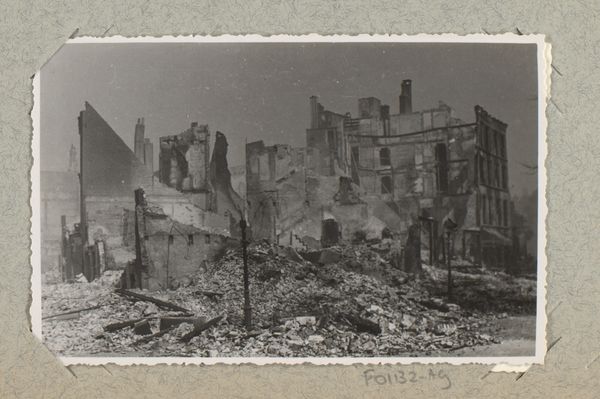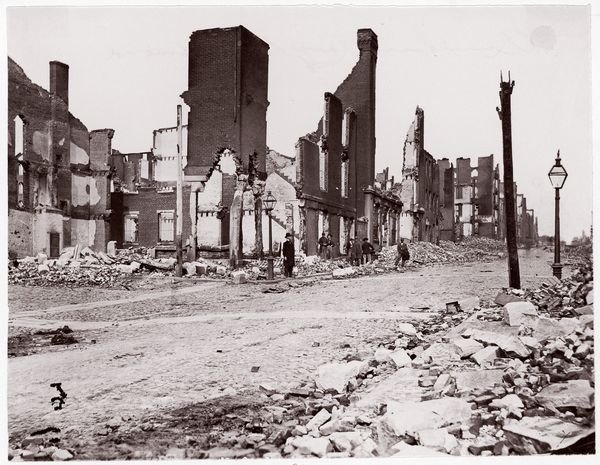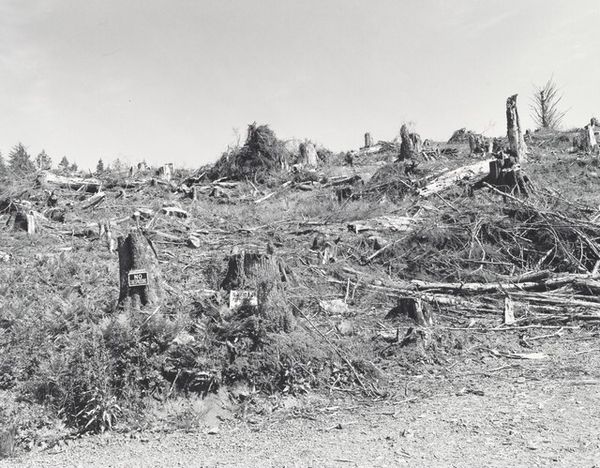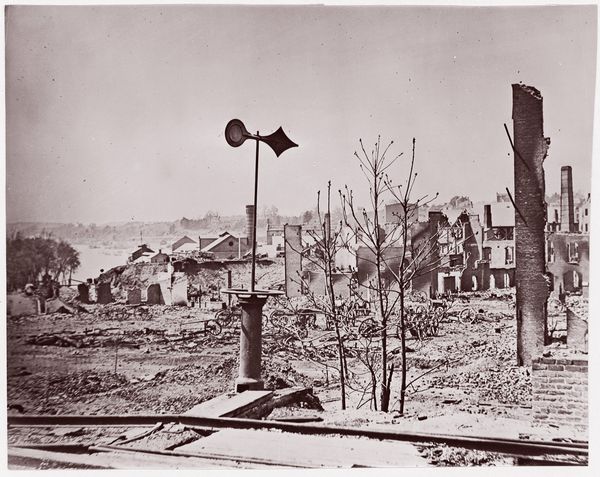
Dimensions: height 10 mm, width 7 mm
Copyright: Rijks Museum: Open Domain
Curator: This gelatin-silver print, simply titled "Geruïneerde huizen", or "Ruined Houses," comes to us from the period of 1940 to 1945, now residing in the Rijksmuseum collection. It is the work of an anonymous photographer. Editor: My initial feeling is one of desolate silence. The grayscale enhances the raw, almost brutal realism of the scene; a landscape of jagged debris and shattered structures. Curator: It’s critical to contextualize this image within the scope of World War II. The ruins speak to systematic destruction, likely from bombings. The photograph could symbolize the widespread impact of war on civilian life and urban landscapes. The destroyed home moves beyond a single event to reveal a more wide scale experience. Editor: Looking at the details, the twisted metal and the crumbling brickwork, I’m struck by the universality of ruins. Throughout history, destroyed structures, be they temples, palaces, or simple homes, acquire symbolic weight. This could be about loss, yes, but also resilience. It evokes something buried deep within our shared human experience: destruction, followed by renewal. Curator: Precisely. The ruined houses are potent symbols of displacement, trauma, and the struggle for survival, echoing the devastation across Europe during the war. Anonymous photographers and photos serve a critical purpose in documenting the era’s atrocities while also speaking to collective identities forged under conflict. The fact it's a gelatin silver print, rather than contemporary media, gives it a layer of authenticity. Editor: And notice how the debris seems almost deliberately arranged in the composition, how shapes emerge within the destruction... the central structure, which looks like an old boiler, a looming reminder of how technology has facilitated destruction and the heavy industries fueling war, towering in the heart of devastation. Curator: This work prompts essential questions about accountability, justice, and collective responsibility and how social realism attempts to show a truthful image without sentimentality, as the people affected deal with such destruction. The monochrome and texture work toward making this happen. Editor: Exploring the symbolism layered within this historical photograph brings to mind all who survived such wreckage. These ruined houses also point to futures reconstructed, carrying imprints of what came before. Curator: Reflecting on the power of such documentary images can make one reflect upon the legacy of historical conflict. Editor: And what humanity finds in the ashes.
Comments
No comments
Be the first to comment and join the conversation on the ultimate creative platform.
